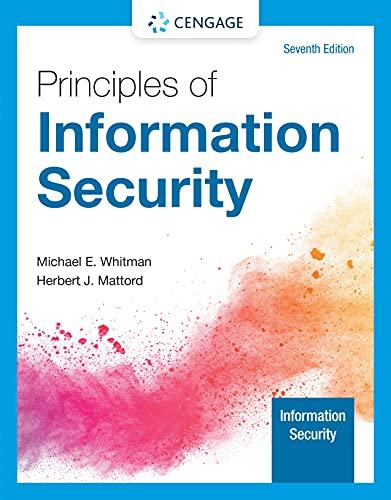Answered step by step
Verified Expert Solution
Question
1 Approved Answer
Wireless networks performance varies from wired networks, the latter uses a guided medium and wireless networks use unguided medium for transmission. To design and simulate
Wireless networks performance varies from wired networks, the latter uses a guided medium and wireless networks use unguided medium for transmission. To design and simulate wireless networks the network simulator - 2 (NS - 2), an open source discreet event simulator could be used. The NS-2 simulator is a widely used simulation tool, which could generate trace files for analysis and comes with a network animator to visualize the network performance.
This assessment requires students to compare and evaluate the performance of wireless routing protocol using the NS - 2. The assessment requires students to design a wireless network topology in NS - 2 and evaluate the generated trace files for a wireless routing protocol. The students are required to carry out a critical analysis of the results of the protocol by plotting graphs and discussing the outcomes.
The students are required work in a group (4 to 5 students) and report on followings
This task aims to simulate a smart home using Internet of Things (IoT) technology in Cisco Packet Tracer. Students will purely practice with the IoT component offered by the Cisco Packet Tracer to be used in the home. Those IoT devices will be connected to the home WLAN that enables the users to control the things through wireless technology. The users should also be able to control the things when they are outside home (remote access). This means the WLAN should be connected to a global network that enables the users to have control on devices when they are at work.
The students are required to complete the following steps:
This assessment requires students to compare and evaluate the performance of wireless routing protocol using the NS - 2. The assessment requires students to design a wireless network topology in NS - 2 and evaluate the generated trace files for a wireless routing protocol. The students are required to carry out a critical analysis of the results of the protocol by plotting graphs and discussing the outcomes.
The students are required work in a group (4 to 5 students) and report on followings
- Design a wireless network consisting of 15 nodes; the dimensions for the given topology are 500x500. The agent type should be User Datagram Protocol (UDP) and the traffic Constant Bit Rate (CBR). The simulation should run for 100 seconds. Random deployment of nodes is required and the nodes are required to transmit packets over the network. The wireless node configuration should include the NS - 2 energy model.
- Run the simulation on routing protocol Destination Sequenced Distance Vector Routing (DSDV). Critically analyse the trace files in terms of packets sent, received and dropped. These parameters should be plotted on graphs and discussed in detail.
- Include screenshots of the NAM (Network Animator) displaying the nodes deployed during the simulation and add screen shots of the simulation.
- Conduct analysis on the results for packets sent, received and dropped for the protocol.
- Appendix I should include the tcl srcript used in each simulation.
This task aims to simulate a smart home using Internet of Things (IoT) technology in Cisco Packet Tracer. Students will purely practice with the IoT component offered by the Cisco Packet Tracer to be used in the home. Those IoT devices will be connected to the home WLAN that enables the users to control the things through wireless technology. The users should also be able to control the things when they are outside home (remote access). This means the WLAN should be connected to a global network that enables the users to have control on devices when they are at work.
The students are required to complete the following steps:
- Explore the ethical implications in the design and implementation of Wireless Local Area Networks (WLANs).
- Test and prove a successful connectivity between users and IoT devices when they are at home and when they are outside of home. You need to take a snapshot for each step of testing followed by the explanation.
Step by Step Solution
★★★★★
3.45 Rating (148 Votes )
There are 3 Steps involved in it
Step: 1
I will break them into two distinct tasks to complete Task 1 Wireless Network Simulation using NS2 This task involves designing and simulating a wirel...
Get Instant Access to Expert-Tailored Solutions
See step-by-step solutions with expert insights and AI powered tools for academic success
Step: 2

Step: 3

Ace Your Homework with AI
Get the answers you need in no time with our AI-driven, step-by-step assistance
Get Started


